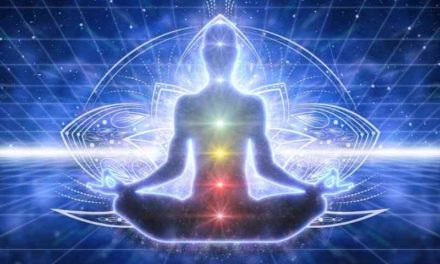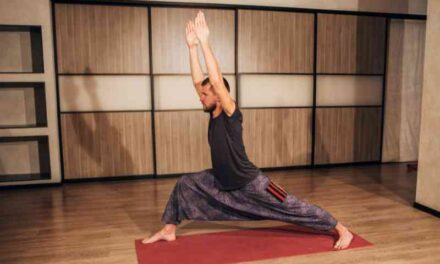Hatha Yoga is an ancient practice that consists of a series of exercises that emphasize proper alignment of the body, mindfulness of the breath, and observation of the mind. The fundamental methods of the practice remain the same, even if there are variations in the styles and techniques that are used.
The style of yoga known as Hatha, which places a significant emphasis on achieving and maintaining physical mastery, is in all likelihood the kind of yoga to which Western society mostly practices. The Sanskrit terms “ha” and “tha,” which translate to “sun” and “moon,” respectively, are the origin of the name “Hatha.”
Hatha Yoga is intended to enhance physical and mental wellness by using postures (asanas) and breathing techniques (pranayama). Hatha Yoga asanas assist to develop flexibility, muscular strength, and blood flow, while pranayama methods aid to regulate the breath and quiet the mind.
Hatha Yoga is a gentle kind of yoga that is suitable for individuals of all ages and abilities. It is a great approach to enhance general health, decrease stress, and boost mental clarity since it focuses on physical postures and breathing. It is also said to have spiritual properties, assisting practitioners in connecting with their inner selves and developing a feeling of serenity and tranquillity.
However, in this context, it denotes “indomitable will.” Through arduous physical and mental exercises, one might achieve enlightenment or the ideal state of mind, which is the goal of the Hatha Yoga practice.
Because of this, many people feel that the goal of Hatha Yoga practices is to integrate and strike a balance between these two energies. However, Hatha is literally translated as “power,” and this is a reference to the physical practices that are used by this discipline.
Traditionally, Hatha yoga has offered a holistic perspective on life, putting a focus on how to react to both one’s internal and one’s exterior experiences in order to arrive at a place of inner peace.
In layman’s terms, a person is considered to be practicing yoga when they have reached a state of mind in which their life is easy or in rhythm with mother nature. Yoga is a term that may also be used to refer to the process of achieving this condition. One of the many various ways to get to this condition is via the practice of HATHA YOGA.
Tantra Yoga, which has been practiced for centuries, is the ancestor of Hatha Yoga. Tantra Yoga’s reputation began to suffer throughout the middle ages as a result of the inappropriate use of the psychic abilities that were acquired through the practice of tantra by a subset of tantric practitioners.
To put it another way, the mind is the next gate after the body. The sun salutations are performed while focusing on the breath, and the poses include balancing and standing postures, as well as back bends, twists, and forward bends. Inversions are followed by a period of rest and relaxation as part of the closing phase.
It is important for the whole body to go through a process of full cleansing in order for there to be any chance of the mind being cleansed. In addition to its other names, hatha yoga is also known as the science of purification. This purification refers to not just one but six distinct sorts.
Hatha Yoga also provides an opportunity to connect with one’s spiritual nature. By focusing on the breath and turning inward, practitioners can tap into their inner wisdom and intuition, and cultivate a greater sense of connection to the universe and all living beings.
Furthermore, Hatha Yoga can be practiced by people of all ages and abilities. The postures and techniques can be modified to suit individual needs and limitations, making it accessible to anyone who is willing to give it a try.
There are six different types of toxins in the body. The body has to be cleansed in six different ways (kriyas). When you rid your body of these toxins and impurities, the Nadis (Nerves) are able to operate properly, and the energy blockages are unblocked.
The 6 Kriyas of Hatha Yoga
- Neti – Cleansing of the Nose.
- Dhauti – Purification of the Stomach.
- Nauli – Abdominal Muscles Exercises.
- Basti and Shanka Prakshalana – Cleansing of the Intestines.
- Kapala Bhati Pranayama – Cleansing the Frontal Sinuses.
- Trataka – Concentration on a Point of light like a candle flame or a small dark dot.
After practicing the six kriyas, the energies travel like wave frequencies via the channels that are contained inside the physical structure, eventually arriving at the brain.
Because of this, we regard the practice of hatha yoga as the foundational practice for tantra, raja, kundalini, and kriya yoga, respectively. Furthermore, the therapeutic impact of yoga has been shown to be highly helpful in the treatment of a great number of ailments that were previously thought to be untreatable.
The primary purpose of hatha yoga is to bring about an absolute equilibrium between the dynamic activities and processes of the physical body, the mind, and the energy that flows through them. When this equilibrium is achieved, the impulses that are produced sound a wake-up call to the central nerve power (sushumna nadi), which is responsible for the development of human awareness.
List of Hatha Yoga Asanas (Body Postures)
SITTING ASANAS
- PARVATASANA
- BRAHMAMUDRA
- DANDASANA
- JANU SHIRSHASANA
- PASCHIMOTHANASANA
- BADDHA KONASANA
- GOMUKHASANA
- SINGHASANA
- SHASHANKASANA
- USTRASANA
- MARJARIASANA
- VYAGHRASANA
- YOGA MUDRA
- VAKRASANA
- VAJRASANA
LYING ASANAS
- SHALABHASANA
- BHUJANGASANA
- DHANURASANA
- MATSYASANA
- ANANTASANA
- ARDHA HALASANA
- UTTHANPADASANA
- ARDHA PAWANMUKTASANA
- SETU BANDASANA
- KATIVAKRASANA
- NAUKASANA
- CHAKRASANA
- MAKARASANA
STANDING ASANAS
- VEERBHADRASANA
- KONASANA
- STHITAPRARTHANASANA
- TRIKONASANA
- KATICHAKRASANA
- TIRYAKA TADASANA
- GARUDASANA
- ADHO MUKHA SVANASANA
- PRISTHASANA
- PADAHASTASANA
- KHADA CHAKRASANA
- VRIKSHASANA
- NATARAJASANA
- UTKATASANA
- SIRSASANA
The sky is adorned with delicate shades of rose and gold as the first whispers of dawn break through, reflecting the blossoming warmth within me. I awaken, not with the usual groaning resistance, but with a newfound sense of buoyancy. Today is a day dedicated to yoga, a chance to gracefully move with my breath and nourish my soul on the mat.
Unveiling my trusted companion, the delicate fragrance of cinnamon and earth wafts through the room, beckoning me to embrace introspection. I shut my eyes, sensing the refreshing touch of the ground against my hands, and allow the tranquilly to envelop me, a striking departure from the bustling symphony of urban existence that typically resonates beyond my window.
The initial pose, Tadasana, also known as the Mountain Pose, may appear deceptively simple. With a serene posture, I embody the strength of a tree, feeling the gentle breeze caress my being. The body, typically filled with tension and worries, gradually relaxes and opens up, with each breath elongating the spine and each exhale letting go of the day’s burdens.
The sequence of sun salutations takes on a reverent quality, becoming a wordless expression of devotion. Reaching out to the sun, I can sense the comforting warmth permeating my body, serving as a gentle reminder of the boundless world outside these walls. Downward-facing dog, a pose that used to be difficult for me, now feels like a familiar embrace, my body connecting the earth and the sky.
I find solace in the grounding power of each breath, releasing the burdens that weigh me down. Warrior II, a pose that exudes strength, transforms into a graceful expression of openness. With my eyes focused on a far-off destination, I bravely open myself up to the unfamiliar, embracing the courageous essence that lies within me.
With the practice deepening, a realm is reached where movement and breath seamlessly merge into one. The Triangle Pose, a demonstration of balance, transforms into a valuable lesson in trust. The delicate balance of my physical being is maintained by the ethereal connection of my breath.
With each twist and fold, I delve into the depths of my being, freeing stagnant energy that lingers like cobwebs in an abandoned attic. The Boat Pose, previously a challenging balancing act, now showcases my enhanced core strength and serves as a powerful reminder that inner calmness can help us navigate through even the most turbulent times.
At last, Savasana, the corpse pose, a complete surrender to the earth. As I lie flat, with my eyes closed, a wave of tranquilly washes over me. My body feels rejuvenated, radiating a peaceful contentment. I am more than just a physical body; I am a conduit of boundless vitality, a radiant essence participating in the grand symphony of the universe.
As I awaken, my body seems to float effortlessly, my mind sharp and focused. The world beyond appears more vibrant, the air fresher. The practice of Hatha Yoga goes beyond being a mere physical exercise. It serves as a means to connect with oneself and serves as a gentle reminder of the interdependence of all things. This piece is beautifully crafted, capturing the essence of the dance between breath and body. It takes me on a profound journey within, only to bring me back to the world with a newfound sense of purpose and engagement. It reminds me that I am not merely an observer, but an integral part of the symphony of existence.
I find myself returning to the day, holding onto the comforting embrace of the mat. The city’s noise has transformed into a lively rhythm, a reflection of the cosmic dance I have just witnessed. The awareness within me will guide every step and interaction, a constant reminder of the peace that lies beneath the surface, ready to be brought to life.





